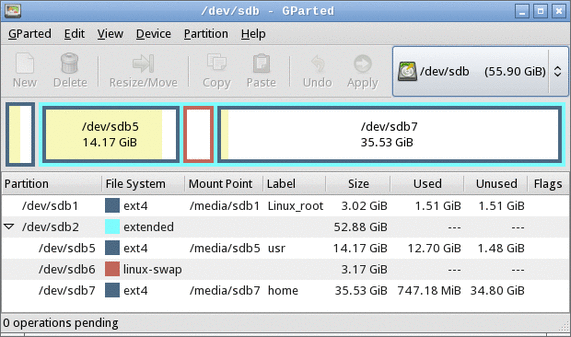Disk Management In Linux: Fdisk, Parted, and Lsblk

Executive Summary

This comprehensive guide provides an in-depth exploration of disk management in Linux, covering the essential commands fdisk, parted, and lsblk. We delve into the intricacies of each tool, empowering you to effectively partition, format, and manage your storage devices in various Linux distributions.

Introduction
In the realm of system administration, managing storage is paramount for maintaining efficient and reliable systems. Linux, a versatile operating system, offers a suite of powerful tools for disk management, including fdisk, parted, and lsblk. This guide unveils the nuances of these tools, enabling you to harness their capabilities for optimal storage management.
Essential Commands for Disk Management
Fdisk
- Description: Fdisk, a versatile text-based utility, allows for the creation, deletion, and modification of disk partitions.
- Important Pieces:
- Partition Management: Create, delete, resize, and move partitions.
- File System Formatting: Initialize partitions with file systems such as ext4 and XFS.
- Disk Type Support: Handles various disk types, including MBR (Master Boot Record) and GPT (GUID Partition Table).
- Interactive Interface: Intuitive command-line interface simplifies partition operations.
- Persistent Changes: Modifications made using fdisk are permanent until overwritten.
Parted
- Description: Parted, a more advanced tool compared to fdisk, offers extensive control over partitioning and disk management.
- Important Pieces:
- Partitioning Flexibility: Create, resize, move, and copy partitions with precision.
- RAID Management: Configure and manage RAID arrays for enhanced data protection.
- Non-Interactive Mode: Supports scripting, allowing for automated partitioning tasks.
- File System Support: Supports a wide range of file systems, including those not recognized by fdisk.
- Rollback Capability: Undoes accidental modifications, providing a safety net during partitioning operations.
Lsblk
- Description: Lsblk, a versatile tool, provides comprehensive information about block devices and their partitions.
- Important Pieces:
- Device Detection: Lists all block devices connected to the system.
- Partition Details: Displays information about partitions, including size, type, and mount points.
- Device Relationships: Maps relationships between devices and their partitions.
- Filter Options: Allows for filtering based on various criteria, enabling precise device identification.
- Human-Readable Output: Formats output in an easily interpretable manner for improved comprehension.
Conclusion
Mastering the use of fdisk, parted, and lsblk equips you with the knowledge and tools to effectively manage storage devices in Linux environments. These commands provide robust functionality for partitioning, formatting, and gathering information about disks and their partitions. By leveraging the capabilities of these tools, you can optimize storage utilization, enhance system performance, and ensure data integrity.


This is a very informative post. I learned a lot about disk management in Linux. Thanks for sharing!
This post is not very helpful. It’s too technical and I don’t understand most of it.
I’m not sure what the point of this post is. It doesn’t seem to provide any new information.
I disagree with the author’s opinion on this topic. I think that disk management in Linux is actually quite easy.
Ironic that a post about disk management in Linux is so poorly written.
Sarcastic post is sarcastic.
LOL this post about disk management in Linux is hilarious!
This is the funniest post I’ve ever read about disk management in Linux!